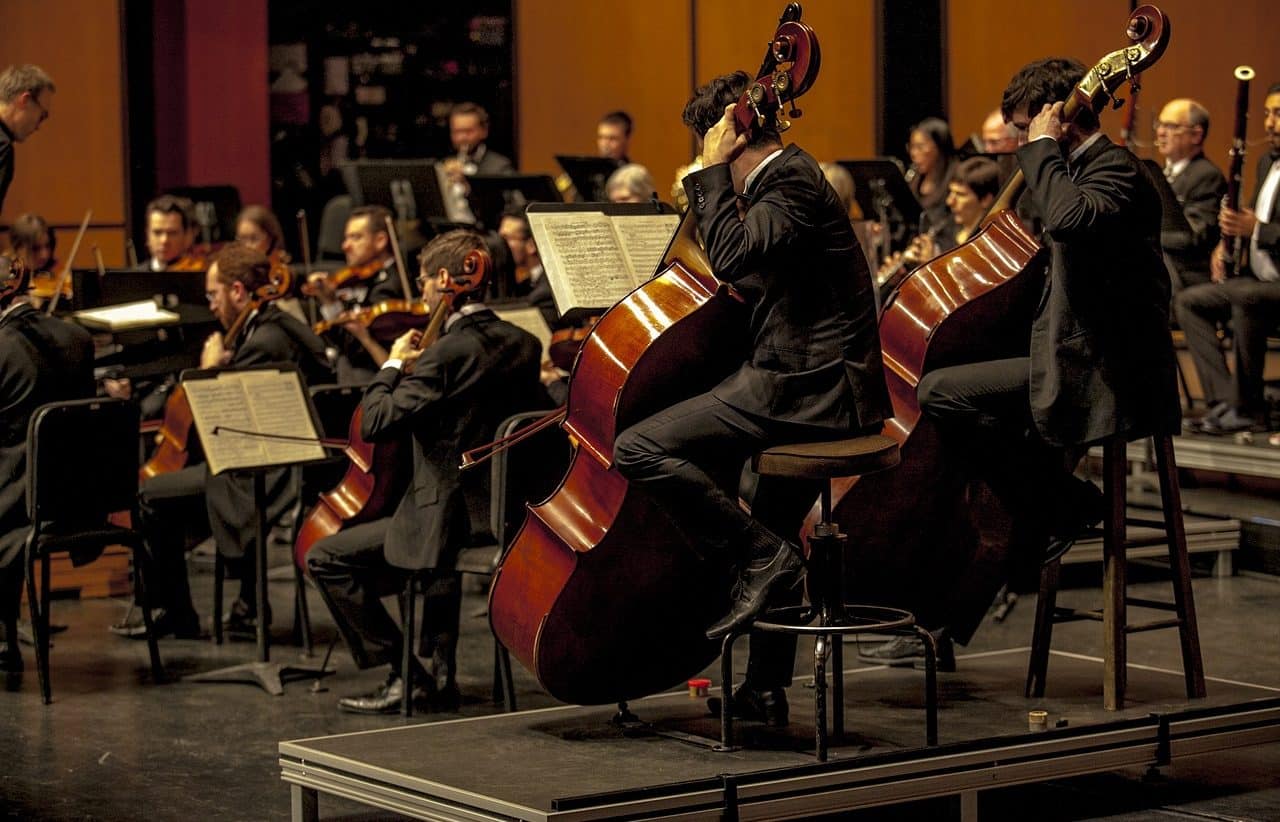
The composition created to be performed by an orchestra is known as a symphony.
A symphony is a set of musical instruments and/or voices that sound simultaneously and in harmony. The concept came to our language from the Latin symphonĭa , in turn derived from a Greek word.
By extension of this meaning, a composition created to be performed by an orchestra is called a symphony. Typically, a symphony is divided into four movements that differ from each other in structure and time . There are, however, symphonies with a different number of movements.
Performance of a symphony
Symphonies, on the other hand, can be performed by different types of orchestras . There are some that are performed by more than a hundred musicians, while others can be performed by just a dozen.
The number of musicians needed to perform a symphony has changed throughout history; more precisely, it has increased, and this can be clearly seen when comparing a concert dedicated to the work of Joseph Haydn and another, to that of Gustav Mahler , for example, since for the first a small chamber orchestra is enough, while for The second may require one whose musicians number in the hundreds.
As expected, this has a notable impact on the character of the works and the sensations that the music transmits to listeners. Although a single musician is enough to express everything from peace to anger, a movement inspired by a war is more impactful the greater the number of performers.

Symphonies can be performed by different types of orchestras.
famous composers
Throughout history , many composers achieved popularity thanks to the quality of their symphonies. One of them was Wolfgang Amadeus Mozart , who numbered 41 symphonies even though he composed several more.
Ludwig van Beethoven , author of nine symphonies, also went down in history. The final movement of the Ninth Symphony , which includes fragments of Friedrich von Schiller 's Ode to Joy , is one of the most famous symphonic compositions .
Johannes Brahms, Franz Schubert y Pyotr Tchaikovsky son otros compositores que alcanzaron un gran reconocimiento por sus sinfonías, las cuales incluso en la actualidad suelen ser interpretadas por orquestas de todo el world en diferentes conciertos.
choral symphony
The concept of a choral symphony , for its part, is a composition that has as performers a choir of singers, an orchestra and sometimes also a soloist . Generally, these pieces have a similar appearance to that of the symphony, from a functional and structural point of view, and that is why they receive this name.
The first person to coin the concept of a choral symphony was the celebrated French composer Hector Berlioz , one of the most prominent figures of musical romanticism , who used it to describe "Roméo et Juliette" , for many considered his masterpiece.
Beethoven 's "Ninth Symphony" , mentioned above, can be considered the direct predecessor of this type of symphony, since it is the first known work that gives the same importance to the human voice as to the rest of the instruments , in the context of a symphony, and this can be seen in the writing of the melodies, but also in the quality and depth of the chosen text.
The concept beyond music
It should be noted that the idea of a symphony is also used in other areas beyond music , with reference to the harmony that exists between colors or, symbolically, to the state of that which works perfectly.
For example, in the field of cooking it is common to hear that a delicious dish is "a symphony of flavors for the palate" , and this refers to the breadth of satisfying sensations experienced by those who try it. Similarly, as mentioned in the previous paragraph, it is possible to describe a very pleasant painting or image as "a symphony of colors" .
